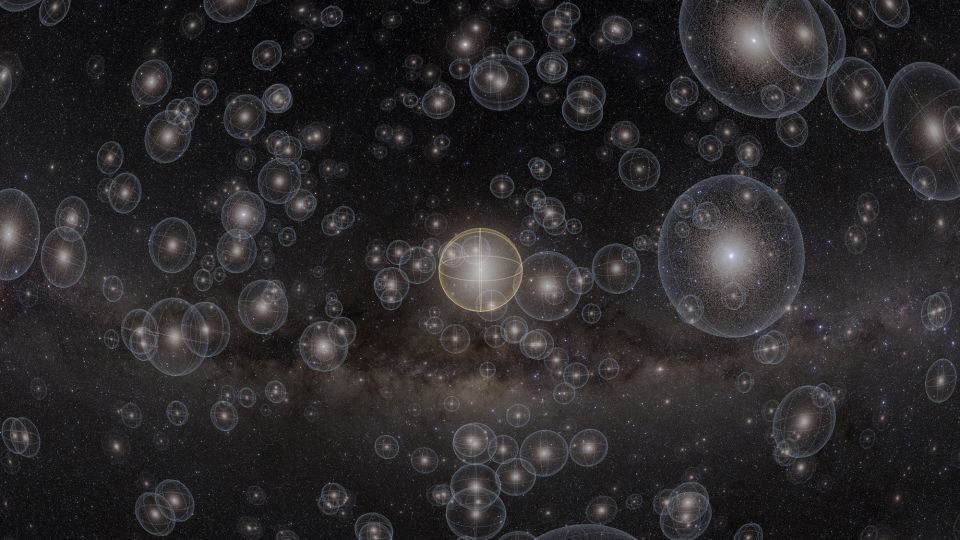
An unexpected discovery at the Hayden Planetarium in New York City could significantly alter scientists’ understanding of the Oort Cloud, a mysterious structure in our solar system. During the preproduction of “Encounters in the Milky Way,” a show that debuted Monday, a projection revealed a spiral structure within the Oort Cloud, challenging the long-held belief that it is spherical.
The Oort Cloud, a vast region of icy bodies orbiting the sun at a distance 1,000 times greater than Neptune, has never been directly observed. The discovery was made while curators were testing a scene depicting Earth’s celestial neighborhood. Jackie Faherty, an astrophysicist at the American Museum of Natural History, recounted the moment: “We hit play on the scene, and immediately we saw it. It was just there. I was confused and thought that was super weird. I didn’t know if it was an artifact, I didn’t know if it was real.”
The Accidental Revelation
The spiral was spotted during a projection on the planetarium’s dome, surprising both scientists and animators. Faherty reached out to David Nesvorny, a scientist at the Southwest Research Institute in Boulder, Colorado, and an expert on the Oort Cloud, who had provided the scientific data for the scene. “We didn’t create it — David did,” Faherty explained. “This is David’s simulation, and it’s grounded in physics.”
Nesvorny initially suspected data visualization artifacts but confirmed the spiral’s presence upon reviewing his data. He subsequently published a scientific paper on the discovery in The Astrophysical Journal. “Weird way to discover things,” he remarked. “I should know my data better, after years of working with it.”
The Enigma of the Oort Cloud
First proposed in 1950 by Dutch astronomer Jan Oort, the Oort Cloud is thought to be a shell of icy bodies extending up to 1.5 light-years from the sun. It represents the solar system’s most distant region, stretching nearly halfway to the next star. These icy bodies, remnants from the solar system’s formation, travel at various inclinations, leading to the assumption of a spherical shape.
Faherty explained, “Every now and again, some of these icy bodies come into the inner solar system, and we can see the orbit that they’re on. They’re on these really crazy, long orbits. It can take them millions of years to go around the sun.”
Despite being surrounded by the Oort Cloud, scientists have never seen it due to the small size and vast distance of its components. Nesvorny noted that the spiral was hidden in his data because he had never visualized it three-dimensionally. “I never looked at it in Cartesian coordinates — I didn’t have a good reason to do so,” he said. “But once you do that, it’s obvious. It’s there.”
Galactic Influences and Future Observations
To confirm the spiral’s existence, Nesvorny used NASA’s Pleiades Supercomputer for simulations, which consistently showed the spiral across different models. The spiral’s formation is attributed to the galactic tide — the gravitational field of our galaxy — affecting the Oort Cloud’s objects. “This field is acting on the small bodies and comets in the Oort Cloud by twisting their orbital planes to create a spiral,” Nesvorny explained.
While the inner Oort Cloud appears spiral-shaped, Nesvorny believes the outer portion remains spherical. Observing the Oort Cloud remains challenging, but the Vera C. Rubin Observatory in Chile may aid in discovering individual icy bodies. However, Nesvorny cautions that the telescope might only find dozens, not the hundreds needed for a meaningful visualization of the spiral.
The Vera C. Rubin Observatory, located in the Tololo hill near La Serena, Chile, will survey the night sky during its 10-year mission and could greatly expand scientists’ understanding of the Oort Cloud.
Scientific Implications and Theoretical Challenges
The spiral discovery offers new insights into the dynamics of our solar system. Faherty emphasized the importance of considering such structures in theories of solar system evolution. “Maybe comets helped deliver water to Earth. Maybe the building blocks of life could be out there in the Oort Cloud,” she suggested.
Malena Rice, an assistant professor of astronomy at Yale University, highlighted the significance of the finding: “This result reshapes our mental image of our home solar system, while also providing a new sense for what extrasolar systems’ Oort clouds may look like.”
However, the discovery remains largely theoretical, based on simulations of gravitational interactions. Edward Gomez, an astrophysicist at Cardiff University, noted, “What they are proposing could be true, but it could also be modelled by other shapes of the Oort cloud or physical processes.”
Simon Portegies Zwart, a professor at Leiden University, expressed skepticism about witnessing the spiral soon: “It is interesting that they found the spiral, but it seems unlikely that we are going to witness it in the foreseeable future.”
As the scientific community awaits further observations, the spiral in the Oort Cloud remains a tantalizing clue in understanding our solar system’s complex dynamics.





